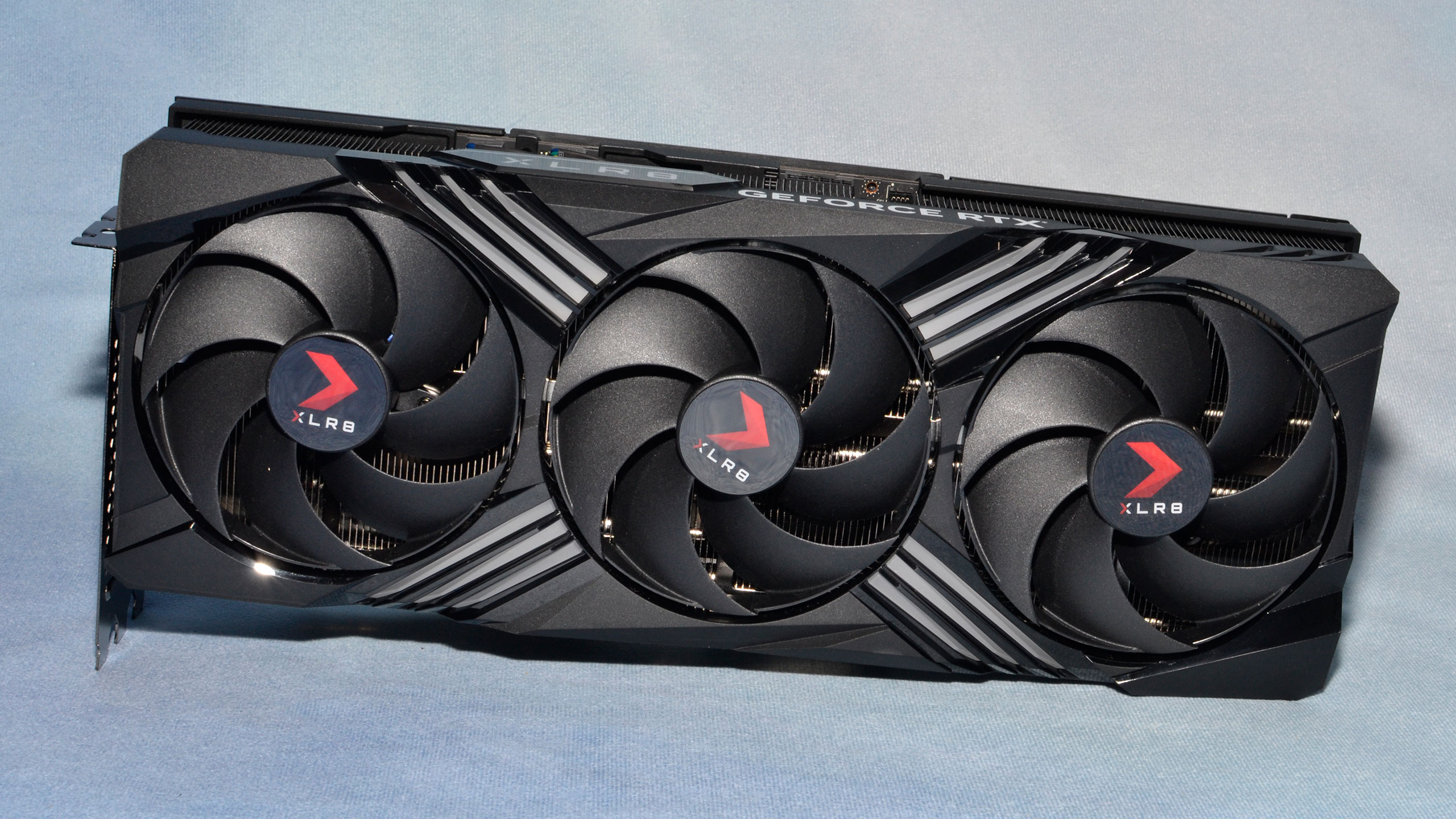The
GeForce RTX 4090
continues to reign as the fastest of the
best graphics cards
currently available, and even better: prices seem to finally be dropping below $2,000. Take the
PNY RTX 4090 XLR8 RGB
(opens in new tab), which you can pick up on Amazon — and there’s the
non-RGB variant for about $50 less
(opens in new tab). We’re still hundreds of dollars above Nvidia’s $1,599 starting MSRP, but we’re getting closer. Maybe by the time the 40-series refresh cards start to show up we’ll actually see acceptable prices (but don’t count on it).
A big part of the problem with the RTX 4090 is the exceptional performance. It’s up to 50% faster than the previous generation
RTX 3090 Ti
in gaming performance, without using DLSS 3. It’s also significantly faster in many professional workloads as well as AI tasks. And the next step down, the RTX 4080, is still expensive and noticeably slower, so those with deep pockets are simply opting for the top product.
Three months on, after the newness has faded a bit and things are starting to settle down, how does the RTX 4090 look? We’re looking at PNY’s reference clocked RTX 4090 XLR8 Gaming Verto Epic-X RGB to find out — and kudos for that adjective laden product name, which we’ll just truncate to “XLR8 RGB” for the rest of this review.
Swipe to scroll horizontally
| Graphics Card | PNY RTX 4090 XLR8 RGB | RTX 4090 | RTX 4080 | RTX 4070 Ti | RX 7900 XTX | RX 7900 XT |
|---|---|---|---|---|---|---|
| Architecture | AD102 | AD102 | AD103 | AD104 | Navi 31 | Navi 31 |
| Process Technology | TSMC 4N | TSMC 4N | TSMC 4N | TSMC 4N | TSMC N5 + N6 | TSMC N5 + N6 |
| Transistors (Billion) | 76.3 | 76.3 | 45.9 | 35.8 | 45.6 + 6x 2.05 | 45.6 + 5x 2.05 |
| Die size (mm^2) | 608.4 | 608.4 | 378.6 | 294.5 | 300 + 222 | 300 + 185 |
| SMs | 128 | 128 | 76 | 60 | 96 | 84 |
| GPU Shaders | 16384 | 16384 | 9728 | 7680 | 12288 | 10752 |
| Tensor Cores | 512 | 512 | 304 | 240 | N/A | N/A |
| Ray Tracing “Cores” | 128 | 128 | 76 | 60 | 96 | 84 |
| Boost Clock (MHz) | 2520 | 2520 | 2505 | 2610 | 2500 | 2400 |
| VRAM Speed (Gbps) | 21 | 21 | 22.4 | 21 | 20 | 20 |
| VRAM (GB) | 24 | 24 | 16 | 12 | 24 | 20 |
| VRAM Bus Width | 384 | 384 | 256 | 192 | 384 | 320 |
| L2 Cache | 72 | 72 | 64 | 48 | 96 | 80 |
| ROPs | 176 | 176 | 112 | 80 | 192 | 192 |
| TMUs | 512 | 512 | 304 | 240 | 384 | 336 |
| TFLOPS FP32 | 82.6 | 82.6 | 48.7 | 40.1 | 61.4 | 51.6 |
| TFLOPS FP16 (FP8/INT8) | 661 (1321) | 661 (1321) | 390 (780) | 321 (641) | 123 (123) | 103 (103) |
| Bandwidth (GBps) | 1008 | 1008 | 717 | 504 | 960 | 800 |
| TBP (watts) | 450 | 450 | 320 | 285 | 355 | 300 |
| Launch Date | Oct 2022 | Oct 2022 | Nov 2022 | Jan 2023 | Dec 2022 | Dec 2022 |
| Launch Price | $1,599 | $1,599 | $1,199 | $799 | $999 | $899 |
It’s a bit strange to have a second reference clocked card, as most companies tend to send us overclocked models. Obviously, that means identical specs to the RTX 4090 Founders Edition, and potentially lower performance than competing cards — but even heavily overclocked cards only add a few percent to framerates, often with higher power draw. So if you want reasonable power consumption and don’t care about the final 3–5 percent increase in performance, this could be just what you’re after.
More likely is that people will be interested in PNY’s card if they can find one in stock for close to MSRP. All other areas being roughly equal, saving a few hundred dollars is always appreciated, even for extreme performance graphics cards.
As for the competition, AMD basically stops at the RTX 4080 level with its new
RX 7900 XTX and XT
GPUs. There’s a relatively large gap between the 4090 and the next step down, whether you’re looking at Nvidia or AMD cards. Despite the lack of Titan branding and certain Titan features (like unlocked drivers in a few professional applications), we effectively have a Titan replacement — at least until the actual future
Titan RTX
arrives (assuming it ever ships).
- MORE: Best Graphics Cards
- MORE: GPU Benchmarks and Hierarchy
- MORE: All Graphics Content
